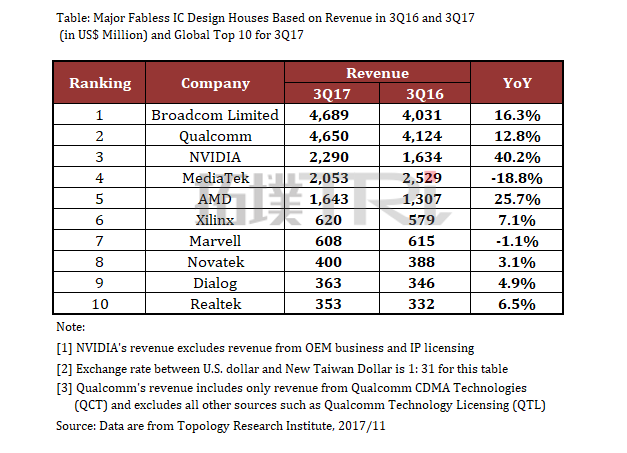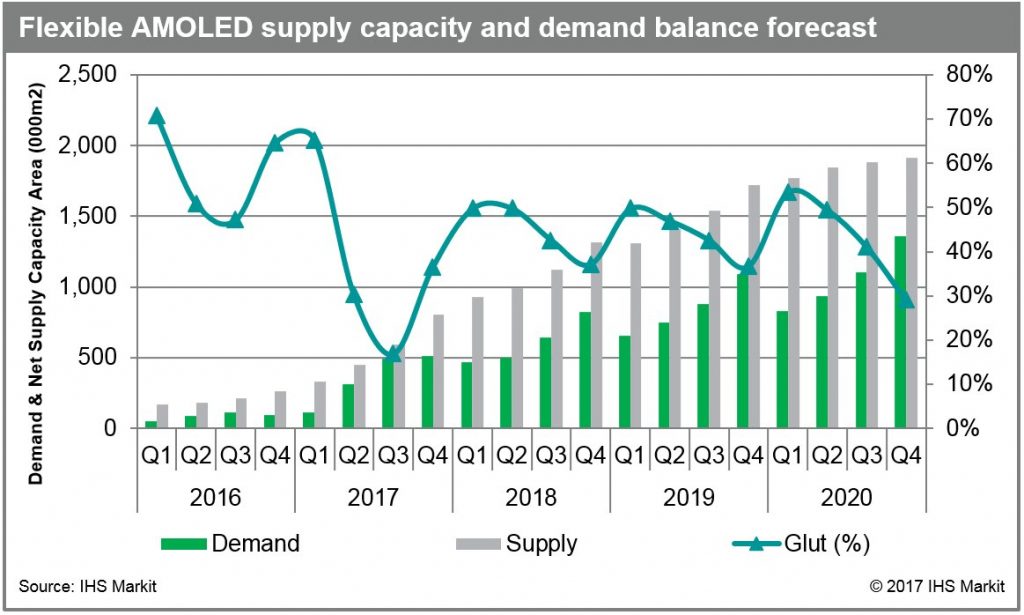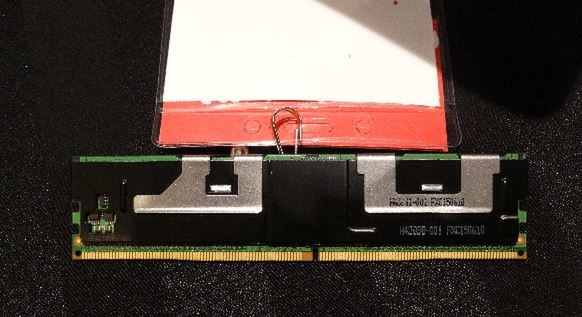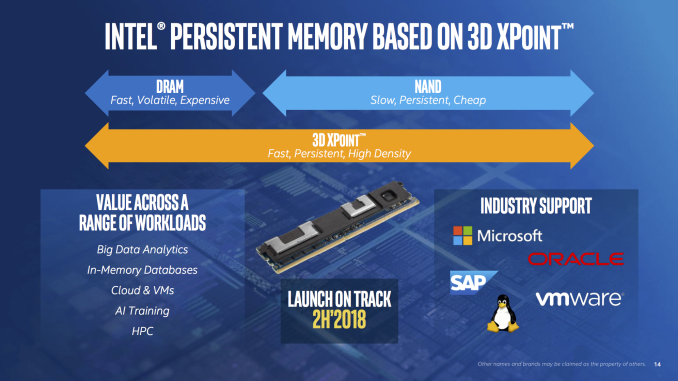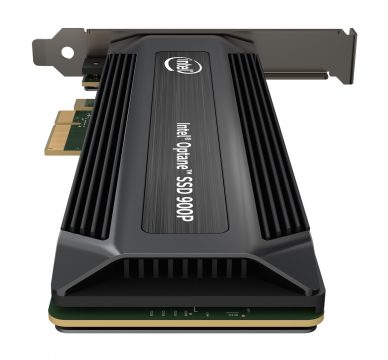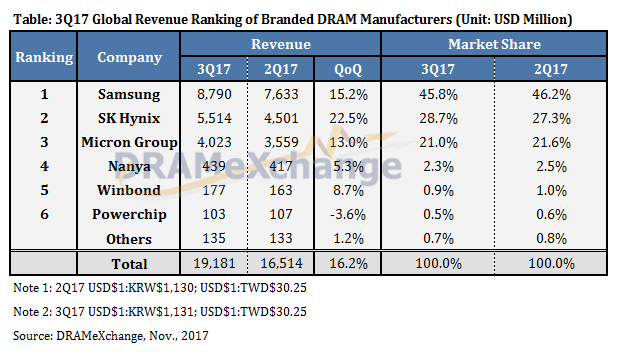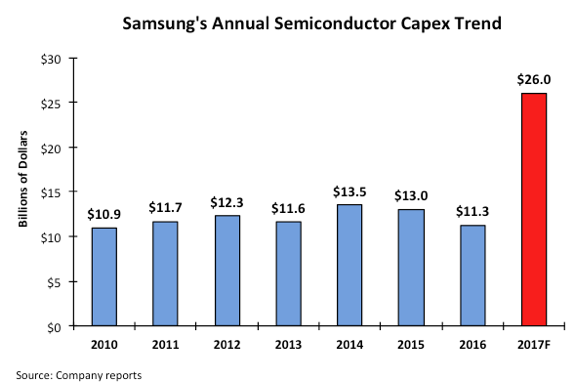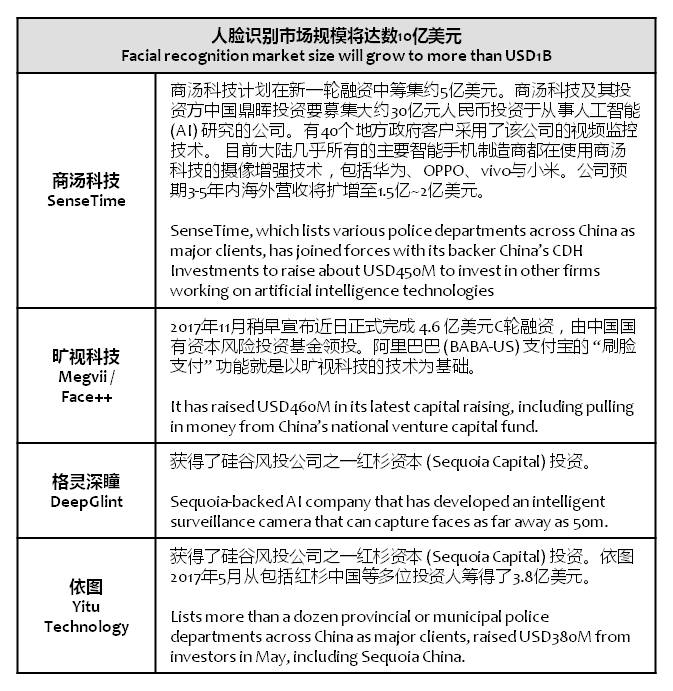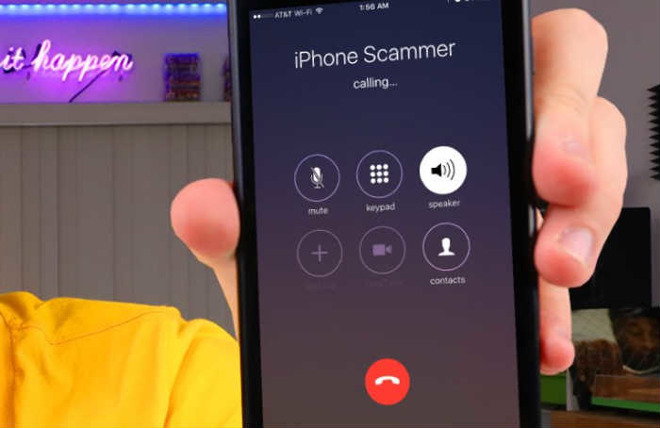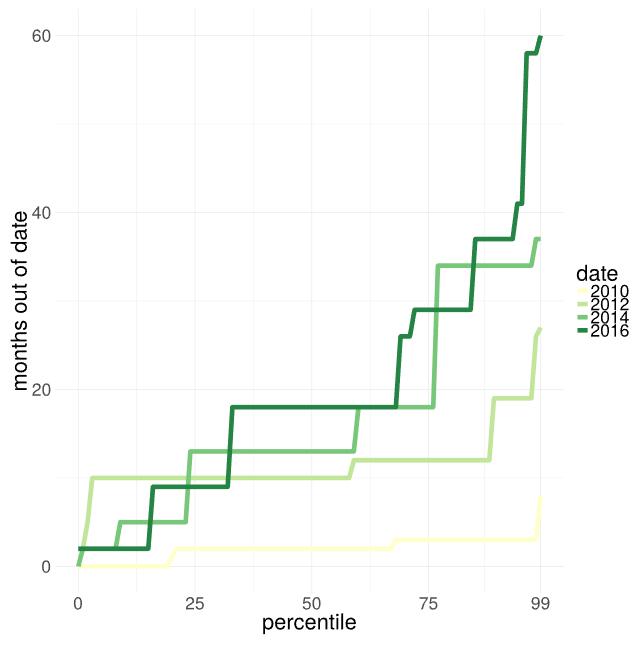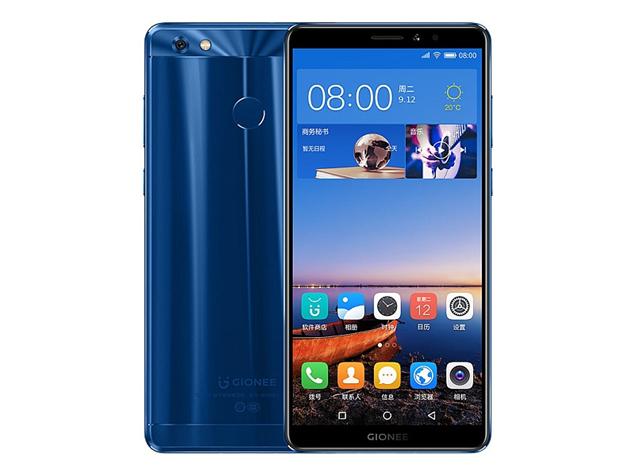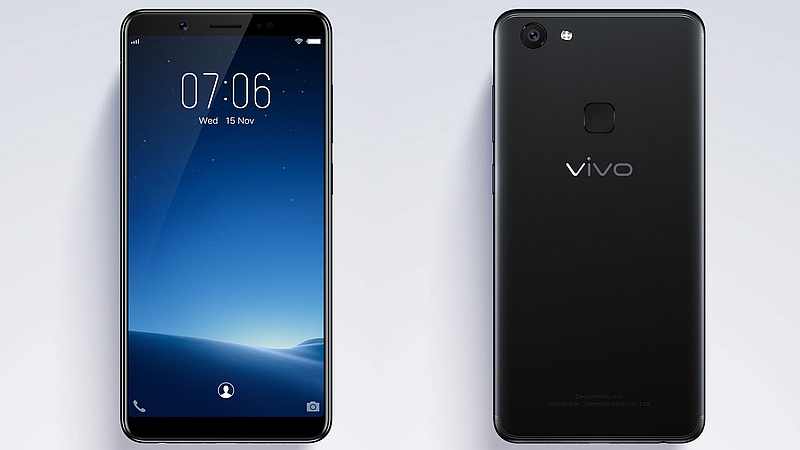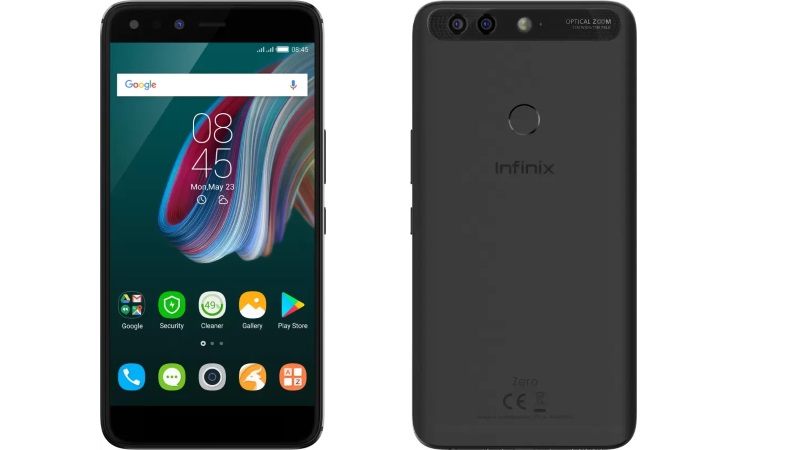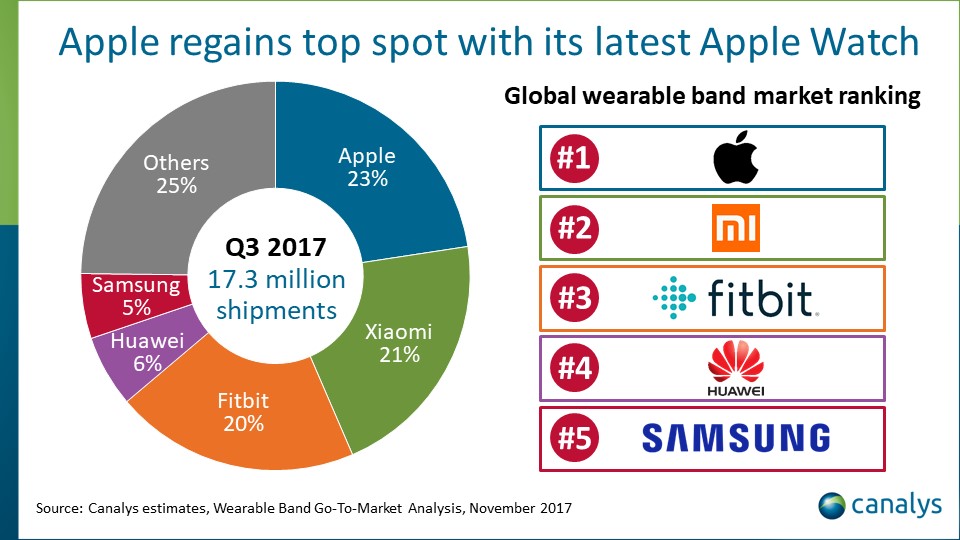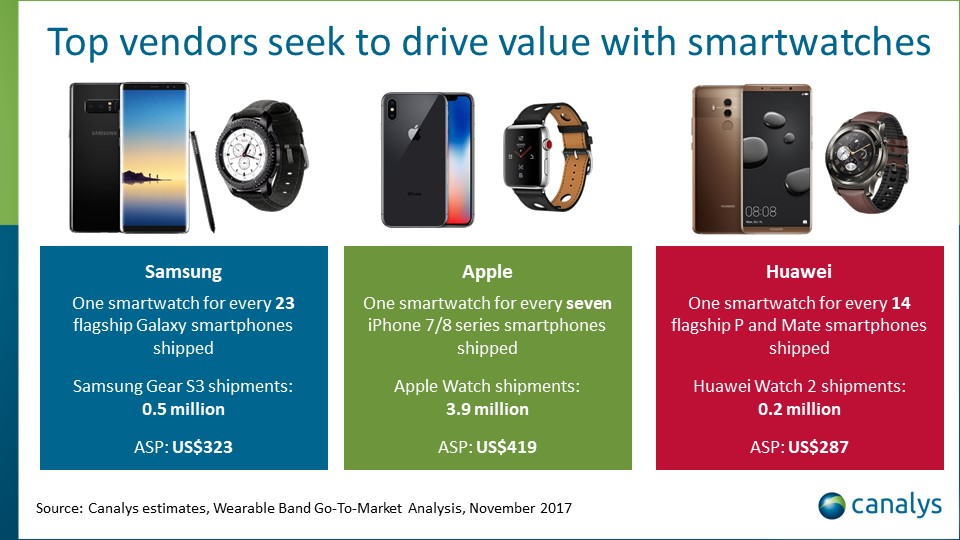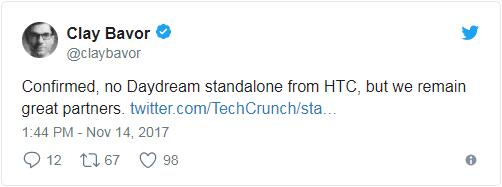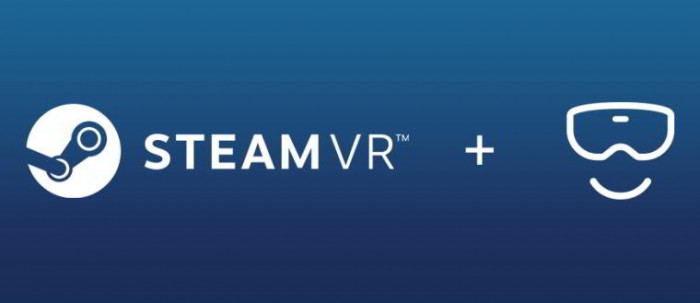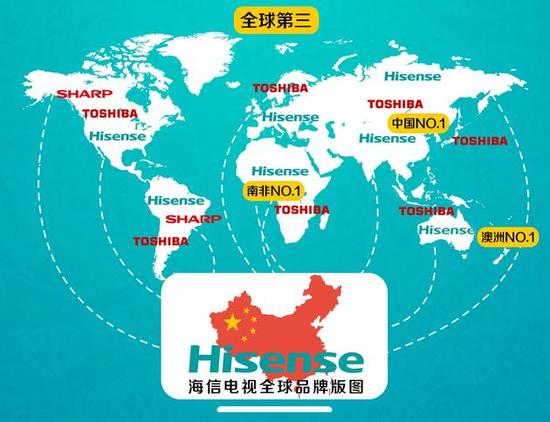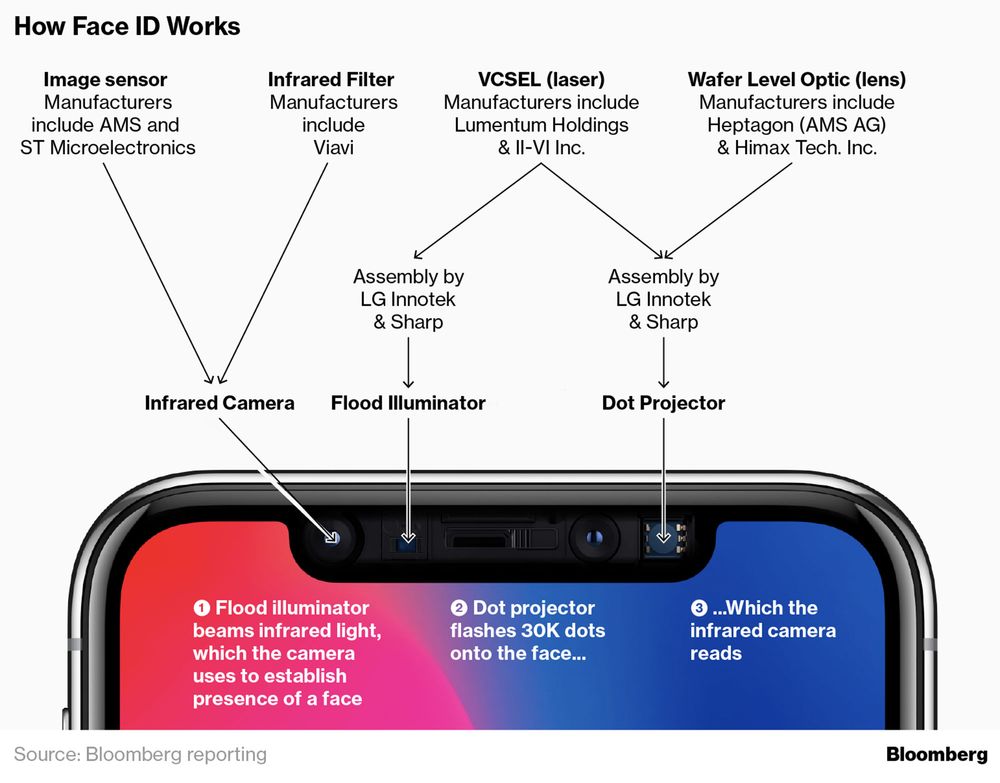
11-16: Qualcomm might be back to the negotiating table to work out “fairer” royalty schemes; Apple is reportedly developing a rear-facing 3D sensor for a 2019 iPhone; etc.
Chipsets
Qualcomm has announced that via its Qualcomm Ventures investing in 9 Chinese companies, including: AI startup SenseTime, bike sharing company Mobike, wireless connectivity market supplier CreatComm, terminal development of AI solution supplier Kneron, autonomous supermarket operator “Ling Hao Element”, combing AI and VR/AR technology content supplier “Qi Huan Technology”, “full immersive” English environment supplier Alo7, and agricultural Big Data service ACSM. (CN Beta, Caijing, JRJ, Reuters)
The Android camp could follow the steps of Apple to temporarily suspend royalty payments to Qualcomm aiming to force the US-based chip vendors back to the negotiating table to work out “fairer” royalty schemes, according to Digitimes. With Huawei’s smartphone shipments reaching about 150M units a year and with an ASP of USD300, Hauwei’s royalty payments could account for 5%~10% of Qualcomm’s annual royalty income. (Laoyaoba, Seeking Alpha, Digitimes, press)
To help device manufacturers meet a growing demand for long-lasting low-power NarrowBand (NB) IoT modules, Gemalto and Huawei – via its semiconductor arm, HiSilicon – are working together to develop the next generation of modules that combine an extra level of security and consume very low power. (Laoyaoba, Gemalto, ACN Newswire)
The revenue ranking for 3Q17 remained generally the same as the previous quarter, with Broadcom, Qualcomm and NVIDIA respectively taking first, second and third place according to TrendForce. Although MediaTek’s 3Q17 revenue and gross margins are close to the upper bound of financial forecast, the year-on-year revenue dropped by 18.8%, making it the only one in the list that had more than 18% revenue decline for two consecutive quarters. (TrendForce, press, TrendForce[cn])
Touch Display
As AR/VR head-mounted display (HMD) requires a very near distance to the eye sights, the ideal display resolution should be around 2,000ppi, which the current LCD, OLED display cannot achieve. However, Micro LED is potentially able to achieve such target. Thus, Micro LED has a big likeliness to become the optimal solution for AR/VR HMD display. (MEM, Laoyaoba)
In 2018 Apple reportedly is going to launch 2 new iPhone using AMOLED display, which is believed going to drive the touch panel supplier General Interface Solution (GIS) shipment. With the bounding getting more complicated, the shipment unit price is going to increase, which will further drive the revenues of GIS in 2018. (UDN, Laoyaoba)
With flexible active-matrix organic light-emitting diode (AMOLED) panel fabs building at a quicker pace than global demand, supply capacity of flexible AMOLED panels is forecast to be 44% higher than global demand in 2018, according to IHS Markit. The net area capacity of flexible AMOLED panels is expected to reach 4.4Mm2 in 2018, up 100% from 2017. However, demand for flexible AMOLED panels is increasing slower than suppliers’ expectation, at 69.9% to 2.4Mm2 in 2018. (China Times, Laoyaoba, IHS Markit, press)
Memory
Navin Shenoy, Intel Executive Vice President and General Manager of their Data Center Group, shared an update on Intel’s roadmap for 3D XPoint DIMMs. Intel claims that they are on track to launch 3D XPoint memory modules in 2H18. They are projecting that 3D XPoint DIMMs will be an USD8B market by 2021. (CN Beta, AnandTech, Seeking Alpha)
Intel and Micron announced the completion of an expansion to Building 60 (B60) at the IM Flash facilities in Lehi, Utah. The expanded fab will produce 3D XPoint memory media, a building block of Intel Optane technology that includes Intel Optane memory for clients, the recently announced Intel Optane SSD 900P Series and new capacities and form factors of the Intel Optane SSD DC P4800X Series. (Laoyaoba, Bit Tech, Seeking Alpha, Intel, Guru 3D)
Revenue of the entire global DRAM industry climbed to a new historic high for 3Q17, reports TrendForce. Contract prices of various DRAM products jumped by about 5% on average in 3Q17 from 2Q17 on the back of the year-end busy season and limited bit supply growth. As the market still experienced tight supply, total DRAM revenue for 3Q17 rose by 16.2% from 2Q17. (TrendForce, press, TrendForce[cn], Laoyaoba)
IC Insights’ latest forecast now shows semiconductor industry capital spending climbing 35% this year to USD90.8B. After spending USD11.3B in semiconductor capex in 2016, Samsung announced that its 2017 outlays for the semiconductor group are expected to more than double to USD26B: USD14B for 3D NAND flash, USD7B for DRAM, and USD5B for foundry and others. (IC Insights, press, Laoyaoba)
Sensory
After Epistar entering VCSEL market, Lextar will provide facial recognition packaging module, which will begin shippin gin 2H18. Lextar expects the revenue will exceed mini-LED. Lextar indicates that 3D sensing has 2 approaches, Infrared LED and VCSEL, and VCSEL is more accurate. Lextar has begun working with CMOS module vendors. LED solution is already available, VCSEL will be focus in 2018. (UDN, LED Inside)
Apple is reportedly developing a rear-facing 3D sensor for a 2019 iPhone that would join the front-facing TrueDepth system that premiered with the iPhone X. Companies manufacturing time-of-flight (ToF) sensors include Infineon Technologies, Sony, STMicroelectronics and Panasonic. The testing of the technology is still in early stages and it could end up not being used in the final version of the phone. (Apple Insider, Bloomberg, Leiphone, Sina)
ams, a leading worldwide supplier of high-performance sensor solutions, and Ningbo Sunny Opotech, a subsidiary of Sunny Optical, a leading manufacturer of integrated optical devices and optical imaging system solution provider, announced a collaboration to jointly develop and market 3D sensing camera solutions for mobile device and automotive applications to OEMs in China and the rest of the world. (Barron’s, Laoyaoba, Business Insider)
Biometrics
Buoyed by China’s plans to build a ubiquitous CCTV surveillance network, Chinese and some foreign investors are pouring money into start-up technology firms that specialize in facial recognition software. According to estimates from IHS Markit, video surveillance – including the equipment and video management software – was a USD6.4B market in China in 2016, with 176M surveillance cameras already installed by the authorities or private companies. (Laoyaoba, Reuters, Wenweipao)
Connectivity
SoftBank and Honda are teaming up for a joint research program that will look at how 5G can be used to improve connected car technology. SoftBank said that it will install “experimental” 5G base stations at Honda R&D’s Takasu Proving Ground, a private test-driving course in northern Japan, with the duo kicking off the 5G-powered joint research venture in Apr 2018. (VentureBeat, Softbank)
Smartphones
The U.S. International Trade Commission has declared that it has launched an investigation of many of Apple’s products that use Screen Sharing and AirPlay Mirroring, after complaints from a company and its licensing subsidiary that develops cross-platform remote access solutions. The investigation was reportedly launched in response to complaints from Aqua Connect, and Strategic Technology Partners —both of Orange, Calif. Strategic Technology Partners is wholly-owned by Aqua Connect. (Apple Insider, Reuters, Sohu)
Apple has reportedly agree to give limited help to the Indian government to develop an anti-spam mobile application for its iOS platform, after refusing to do so based on privacy concerns. (Apple Insider, Reuters, CN Beta)
Over 1B of currently active Android devices are heavily outdated and the number of used smartphones and tablets running an obsolete version of Google’s operating system could even increase going forward, programmer Dan Luu suggested after analyzing and comparing some data sets, including Google’s monthly Android distribution numbers, as well as the company’s previous revelations regarding the scope of its mobile OS like the recent announcement that there are more than 2B Android devices in the wild. (Android Headlines, BGR, Danluu, OS News, CN Beta)
According to Meizu Head of Global Marketing Ard Boudeling, Meizu is not entering the US with smartphones at this time. They are entering a number of other American markets, where FCC certification is also required. (Android Authority, Gizmo China, CS.com)
Gionee M7 Power is launched in India – 6” 1440×720 HD+ display, Qualcomm Snapdragon MSM8940 processor, rear 13MP + front 8MP cameras, 4GB RAM, 64GB storage, Android 7.1.1 (Amigo 5.0), 5000mAh battery, INR16,999. (Android Authority, NDTV, India Today)
vivo V7 is announced in Indonesia – 5.7” 720×1440 HD+ display, Qualcomm Snapdragon 450 processor, rear 16MP + front 24MP cameras, 4GB RAM, 64GB storage, Android 7.1 (Funtouch OS 3.2), 3000mAh battery, IDR3,799,000 (USD280). (Android Headlines, India Today, NDTV)
Infinix Zero 5 / 5 Pro are launched in India – 5.98” FHD2.5D curved display, MediaTek Helio P25 processor, rear dual 12MP – 13MP telephoto supporting 2× zoom + front 16MP cameras, 6GB RAM, 64 / 128GB (5 Pro) storage, USB Type-C, 4350mAh battery, INR17,999 / INR19,999 (5 Pro). (GSM Arena, NDTV)
PC / Tablet
According to Strategy Analytics, global tablet shipments grew 2 percent quarterly to reach 45M units in 3Q17. Apple maintained first position with 23% global tablet market share, while Samsung fell to 13% share. (Laoyaoba, Strategy Analytics, press)
Wearables
According to Canalys, Apple retook the lead in the wearable band market in 3Q17, with shipments of 3.9M. Xiaomi and Fitbit, which shipped 3.6M and 3.5M wearable bands respectively, have also bucked the trend of the traditionally weaker 3Q17 by posting QoQ growth. But despite the increase in smartwatch shipments, waning demand for basic bands meant the overall wearable band market fell 2% to reach 17.3M units. (VentureBeat, Canalys, press, Apple Insider, Huanqiu, Sina)
Quanta vice chairman C.C. Leung reveals that the company has been working on an AR project and have studied the optical technologies that AR devices have needed since 2 years ago. They see such a device available in the market no later than the year 2019. While Quanta has other clients, Apple is the biggest, for which it assembles MacBooks and Apple Watches. (Ubergizmo, Apple Insider, Asia Nikkei, Sina)
HTC has officially cancelled the standalone virtual reality (VR) headset based on Daydream platform the company was set to build with Google. The company instead introduced a separate device for the Chinese market that will be powered by a newly-announced mobile VR platform called Wave. (Android Headlines, The Verge, Variety, Qudong, DoSpy)
SteamVR is now an official part of Microsoft’s Windows Mixed Reality with the announcement today that Valve’s VR platform is now compatible with Microsoft’s technology. (CN Beta, Windows Central, Neowin, SteamVR)
Internet of Things
Toshiba said it would sell a 95% stake in the unit, Toshiba Visual Solutions (TVS), in a deal worth JPY12.9B (USD114.4M) to Hisense Electric. Providing it gains regulatory approval, the sale is set to be completed by or after Feb 2018. (CN Beta, The Verge, ABC News, ZDNet, Toshiba, Asia Nikkei, Tech Spot)
Spurred by Foxconn Technology Group and its plans for a mega-factory in Racine County, state highway planners are studying the possibility of including special lanes for driverless vehicles on I-94. (Journal Sentinel, Engadget, Android Headlines, NTDTV)

